Hello my Frame Quilting Friends! I've been working on this bright red baby quilt and this week I'm finishing up the borders with feathers. Borders are easy to quilt down the length of the longarm frame, but challenging to quilt down the sides.
Make sure to watch this video to see how I quilted a continuous feather border around this baby quilt!
How to Quilt Simple Space Feathers
Feathers are a beautiful, traditional quilting design and I have been wanting to practice them on the longarm for a while. The problem is I know my favorite feather design is going to be a bit messy. This design typically involves a lot of travel stitching which is harder for me to do neatly on the longarm in comparison to my home machine.

I decided to use Space Feathers, which is basically the same feather shape, but with no travel stitching at all. Instead I had to visualize the shape and echo the back of each feather to form the design.
Space feathers are quilted by stitching the rounded teardrop shape, then pivoting before you reach the center vine line and echoing the back of the feather to form the next feather shape. Instead of travel stitching between the feather shapes you quilt leave a bit of space between the teardrops.
While this eliminates the travel stitching, it can still be a challenge to quilt the feather shape smoothly and consistently. I do think the more you quilt any design the better you get and I definitely saw improvement as I quilted this baby quilt.
Quilting a Feather Border Horizontally Across the Frame
The long borders that run horizontal down the frame are very easy to quilt in one long pass. So long as the width of the border isn't bigger then the space you can quilt in, you can quilt the entire design by simply stitching across the frame. I began by stitching a gently curving vine line using the Super Slide quilting ruler a guide.
I spaced 1/2 inch between the lines to make the center of the feather thick and chunky. I started this line working from the middle of the border to the corners. I did this so the curve would be symmetrical running from the center of the border to the outer edges. Once the vein was established, it was time to stitch the feathers. I began on the left side and swirled out with a long line of space feathers, aiming to fill in entire space between the vein line and the quilting I'd finished in the middle of the quilt.
This resulted in a lots of big, honking feathers! I think these look great, even though a few had some rather wobbly looking edges.

It was not only easy to quilt the feathers across the frame, it was also very fast and this area was filled in only a few minutes. Quilting the opposite side of the feather as you saw in the quilting video was a bit more complex because I didn't want to stitch too close to the edge of the quilt.
Always keep in mind how much space the binding is going to take up. Be careful not to stitch too close to the edge so your feathers get lopped off by the binding.
Quilting a Feather Border in Pieces
Now it’s time to quilt this same border, but in tiny pieces! The opposite borders run perpendicular to the frame and have to be quilted within the shorter length. Basically, I took the same feather design and broke it up into smaller chunks.
I'll be honest, I had no idea if my idea for quilting the border in smaller pieces was going to work. Please remember I'm learning right along with you in these Frame Quilting Friday videos!
I started by marking the center vine line down the length of the border. Had I known I was going to do this design from the beginning, I would have marked this before pinning the quilt top to the longarm frame.
With the lines marked, I was able to use my Super Slide quilting ruler quilt along the lines easily.
From there I stitched the line from the corner down along the curve and ended up in a strange place on the border. I was limited by the depth of my frame and couldn't keep quilting further down without advancing the quilt.
At this stage I was thinking I would curve the feathers backwards to continue the design. But that angle doesn't really work for me. I changed the angle of the feathers and found it super easy to quilt the space feathers up to match with the designs I’d already stitched.
I quilted the opposite side the exact same way, quilting the curving line guided by a ruler down the length of the frame, then I switched to space feathers to stitch back upwards.
Just to make sure the quilting design could continue, I advanced the quilt on the frame, marked the curving line, and continued the design seamlessly. This was super exciting and I managed to make all of the borders continue seamlessly down the sides!
Feather Border Alternative - If you don’t like this idea, one option is to finish the quilt completely and stitch the top and bottom borders, and then remove the quilt from the frame and re-pin it so the borders are running in the opposite direction. The downside is you may have a quilt on your frame that is too long for this technique to work. In this case you'll have to be able to quilt the design in short sections.
Ready to learn more about longarm quilting? Find all of my longarm quilting tutorials here.
Let's go quilt,
Leah Day


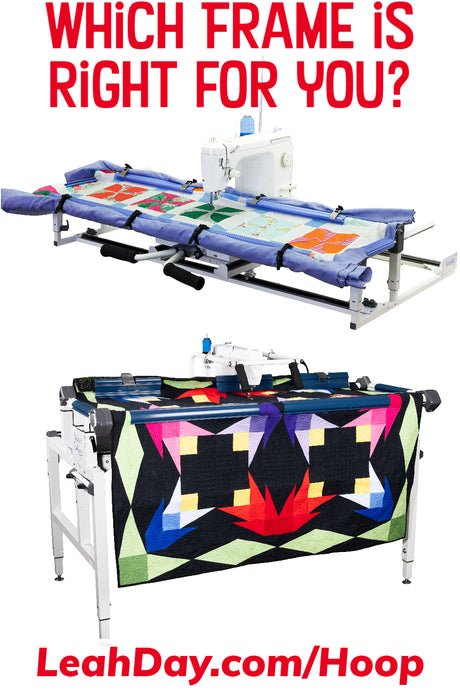

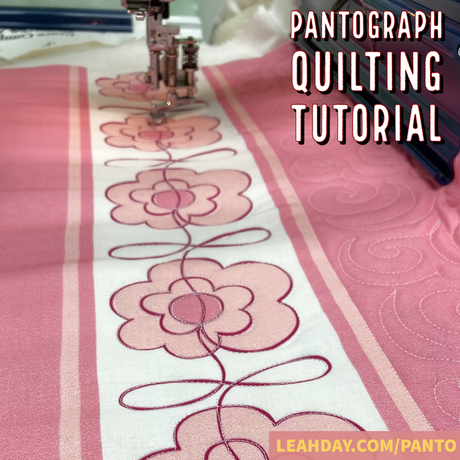

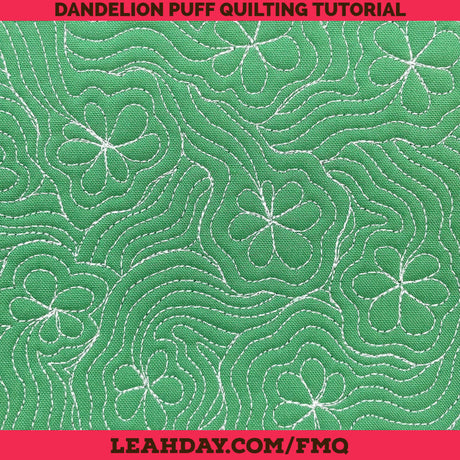
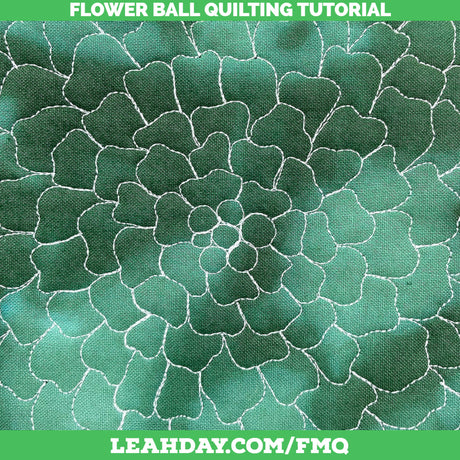
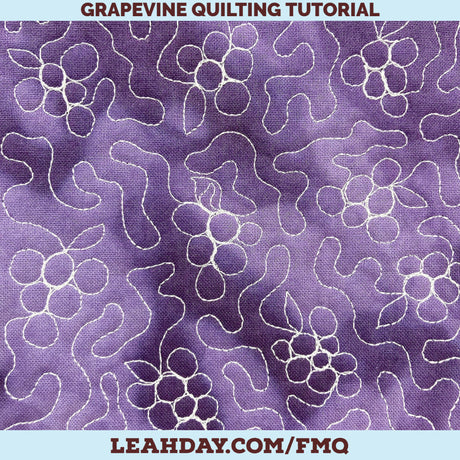
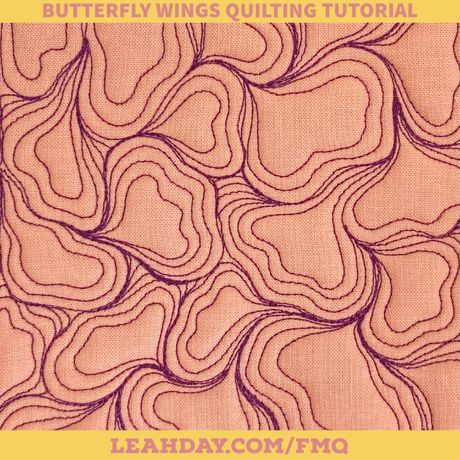
1 comment
What is the second layer under the batting? It looks like a knit interfacing, maybe? And why do you use that ?